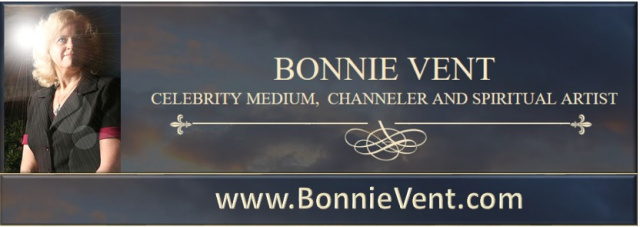What makes a good ghost story? The Stanley Hotel's employees have spent a lot of time working on that question and on February 24, they found something else to support one of the most interesting stories they tell. Pieces of wallpapered drywall and carpet from the hotel's infamous Room 217 was discovered in the bowels of the structure while the hotel's engineer was checking the air handlers.
A good ghost story has an interesting and eventful life story, otherwise known as a rich history. Inspiring innovation, groundbreaking technologies, and colorful characters abound in the story of the Stanley Hotel. Freeland O. Stanley moved to Estes Park with his wife Flora in the early 1900s, seeking the "mountain cure" for tuberculosis. Co-inventor of the Stanley Steamer motorcar (with his twin brother, Francis), Stanley brought many new technologies to Estes Park and his hotel. He built a hydroplant at Fall River; the electricity generated from this plant was distributed along overhead lines to his hotel. He also sold electricity to Estes Park citizens, not by metering usage but rather, by selling light bulbs. Stanley also built the town's first wooden-pipe water distribution system. In 1909, the doors of his luxury hotel opened offering a flood of electric lights and running water to his guests. "It was one of the first hotels west of the Mississippi to have electricity," Freitas explained.
In 1911, Room 217 was the Presidential Suite, said Jesse Freitas, the hotel's archivist: an L-shaped room that took up the space that now houses two rooms: 217 and 215. On the evening of June 25 of that year, a thunderstorm cut the power and all of the hotel's guests were taken down to the lobby while staff was charged with lighting the back-up acetylene gas lamps. There was an unknown gas leak when chambermaid Elizabeth Wilson entered Room 217 with a lit candle.
"The gas didn't have an odor in that time period," said Freitas, "so she couldn't smell anything. As soon as she entered the room, there was an instant explosion." The massive blast destroyed about 10% of the nearly 70,000 square-foot hotel, it's entire west wing. "It was a compression explosion," Freitas explained, "so it actually put out its own fire, otherwise it would have burned down the hotel because it is mostly wood, a timber-frame structure." The force of the explosion sent Wilson crashing into the MacGregor Dining Room located directly under Room 217. She suffered two broken ankles, but recovered from her injuries. Stanley paid her all her medical bills and after she recuperated, Wilson was made head chambermaid and worked at the hotel until her death in the 1950s. After her death, she purportedly began to haunt the room, sometimes by folding guests' clothing and putting them away. If an unmarried couple is occupying the room, Freitas said, the very proper Mrs. Wilson's ghost may climb into bed with them and try to force them apart.
That's the official story as told by Freitas, the one that is generally accepted as what really happened. But any good ghost story also contains quite a bit of mystery. Five different Colorado news accounts of the incident reported five different - sometimes vastly different - stories. The Denver Times reported just a day later that the chambermaid's name was Elizabeth Lambert and that she was fatally injured. The same report said that she was joined on the second floor by another maid, Eva Colbern, who was "thrown through a wall onto the hotel porch.. but she was merely stunned."
The Denver Post also reported Elizabeth "Lambert" was fatally injured during her fall into the dining room "just as a fashionable throng of guests was finishing dinner." Somehow all of the guests narrowly escaped injury as Room 217 fell into their laps. But this account describes a fire that "added to the damage" which was heroically put out by Miss Colburn after she had been "blown through a hole in the wall, onto the porch." She then grabbed a fire extinguisher and began fighting the flames. A third maid, Mary Donaldson, was also caught in the explosion (according to the Post), and she too found an extinguisher and began to put out the fire.
The Colorado Springs Gazette reported a story close to what is accepted as the truth, but added that an addition seven people were injured. The report further identified the broken-ankle victim as head chambermaid, Elizabeth Wilson of Lancaster, Pennsylvania.
A report that ran in the Rocky Mountain News was a submitted story, the byline read "special to the News." It reported the accepted true version of Wilson sustaining two broken ankles, but further reported Alfred Lamborn, general manager of the hotel, and wife and daughter were having dinner in the room below. "A large steel girder from the second floor crashed down, landing between the three, smashing the table," stated the News, "The party escaped with bruises." This report also said that the incident started while testing the acetelyne gas system and a small explosion had occurred about an hour prior to the big one. Then, the door to Room 217 blew off. "Employees then went in search of the leak to the room on second floor. A moment later, a terrific detonation startled the guests of the hotel."
And finally, the Fort Collins Weekly Courier reported that the acetelyne gas explosion was a result of unknown circumstances, since the gaslights were not in operation at the time. This report claimed that guests had been saved because "a late dinner was to be served" that evening. Curiously, in the Fort Collins report the victim is named Lizzie Leitenbergher.
None of the reports mentioned a thunderstorm, and all of the reports said the victim(s) were taken to Longmont Hospital. Also, all the stories agree the explosion occurred at around 8 pm.
"This is the most paranormal story we tell because it's such a mystery," said Freitas. No employee records from the time period are still at the hotel, and no photograph of Elizabeth-Lizzie-Wilson-Lambert-Leitenbergher of Lancaster, PA, can be found.
The final - and most vital - ingredient of good ghost story is a good storyteller. Mary Gorton, known affectionately as "Scary Mary" has been giving tours at the Stanley for five years and has mastered the art of storytelling. She, too, was thrilled when the pieces of drywall and carpet were found, 103 years later, from the explosion in the room that is said to be one of the most haunted in the hotel.
"It's amazing, isn't it?" said Scary Mary, "to think that Flora Stanley picked out that wallpaper and the carpet." The discovered pieces of drywall are papered with a brightly-colored floral pattern in reds, pinks and greens and the carpet fragment is a grass green with red and blue details. Looking at a picture of Room 217 before the explosion, both materials can be matched up with the original decor. Freitas said that over the years, pieces of the original moldings and from the exterior of the west wing and the door handle from the room have been found on the property, but this recent discovery was the most exciting - clearly, a result of the explosion. "To think that millions of people have walked by those pieces (in the employee tunnel)," Freitas said, "and no one knew they were there."
Scary Mary is a very popular tour guide at the hotel, and her success is due in no small part to the way she tells the hotel's stories. With sincere conviction, she relates her personal experiences and second-hand tales of the hotel's hauntings while conducting her tours. She encourages people to constantly take pictures while on the tour, and then helps them analyze the results. Sometimes apparitions can be distinguished, with enough zoom (and enough suggestion). Ghost orbs - especially green ones - sometimes show up on these pictures. "Green spots especially, zoom in to find a face," said Scary Mary. Her tours also contain just enough skepticism to ring true, and plenty of humor.
"I always say that Elizabeth Wilson had a blast at the Stanley Hotel," she quipped.
The discovery of concrete evidence of the explosion lends more weight to the story of Room 217. "We make over one million dollars in tour revenue annually," said Freitas, "We offer a variety of tours that you can see online stanleyhotel.com/tours. We try to appeal to both the history and the paranormal enthusiasts that come to the hotel while retaining accurate information and not over dramatizing the ghost stories."
A beautiful hotel, one of the first of its kind, built in a remote mountain setting by an extraordinary man, conflicting reports on events at the hotel, unexplained happenings, and wonderful storytellers all contribute to the drama. And that's what makes a good ghost story.


